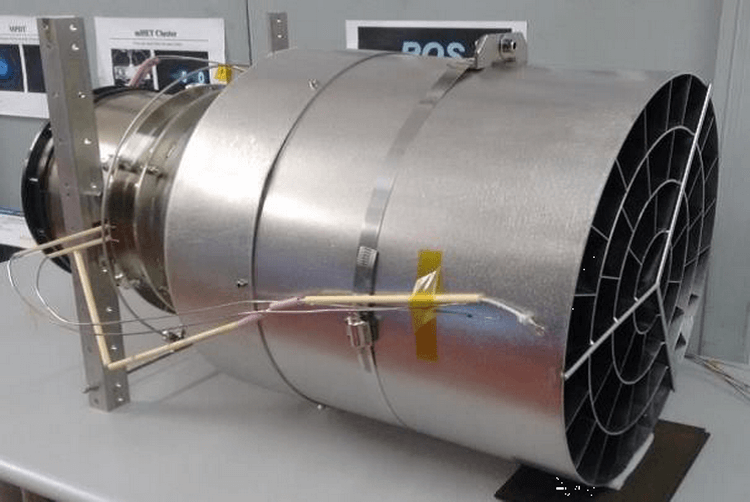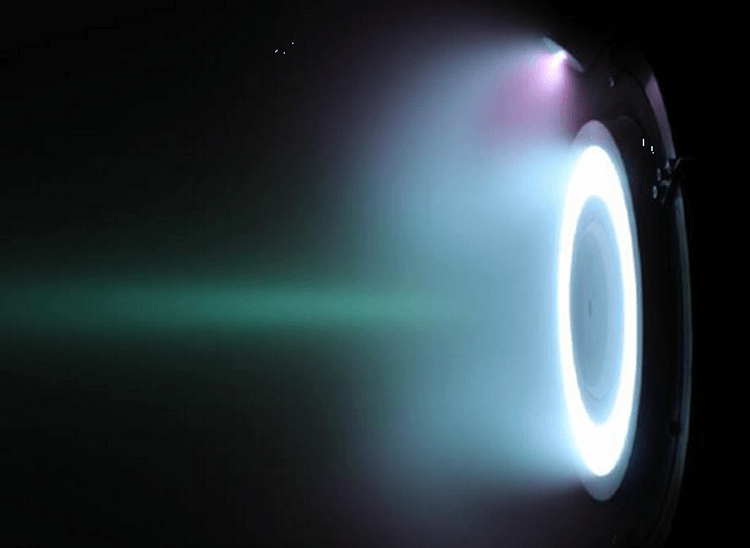
The European space Agency reported the first flow test of ion engine that uses as fuel the air from the ambient atmosphere. As published on the official website of the Agency press release reported that in the future such motors can be used in small satellites which will allow them to work virtually unlimited amount of time on an orbit with an altitude of 200 kilometers and less.
Based on ion thrusters based on the principle of ionization of gas particles and their acceleration using electrostatic fields. Due to the design characteristics of the gas particles in such engines are accelerated to much larger velocities than chemical engines. Ion engines are able to create a much larger specific impulse and show a lower fuel consumption, but have one significant drawback – create a very low thrust compared to conventional chemical engines. That’s why ion engines are rarely used in practice. Among the latest examples of their use can be identified unless the spacecraft “Dawn”, currently in orbit of the dwarf planet Ceres and the office of the mission BepiColombo to study mercury, which will begin in late 2018.

Diagram of a ramjet air ion engine
Standard configuration currently used ion thrusters implies a fuel, which typically is xenon gas. But there is the concept of once-through ion engines, which in real space missions have never been used. It differs from a conventional ion thrusters that as a fuel source is not finite supply of gas to load into the tank before starting, and the air directly from the atmosphere of the Earth or other body that has atmosphere.

In theory, a small device equipped with this engine will almost always operate in low orbit with an altitude of 150 kilometers. The compensation of the atmospheric braking will be implemented by the engine thrust-producing air intake from the atmosphere.
The European space Agency in 2009 launched satellite GOCE, which is always enabled due to the ion engine with the stock xenon has been on the 255-kilometer orbit for almost five years. The results of the experiment, ESA decided to develop the concept of ramjet ion thruster for the same satellites.

Gazozaborny installation

Test ion engine with xenon as fuel
Testing of the prototype took place inside the vacuum chamber. Initially, the installation submitted an accelerated xenon. In the second part of the experiment in gazozaborny system began feeding a mixture of oxygen and nitrogen which simulated the atmospheric composition at an altitude of 200 kilometers. In the last part of tests to check system health in native mode, the engineers used a clean-air mixture.

Test ion engine with air as fuel
ESA conducted a test of the ion ramjet engine running on air
Nikolai Khizhnyak